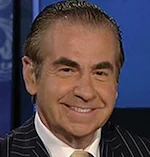 |
| Fraser Seitel |
Because I don’t have permission, I’ll disguise the names.
After two decades of distinguished service at a major pharmaceutical company, a seasoned and competent public relations professional—let’s call him “Greg”—grabbed a once-in-a-lifetime opportunity to get rich by joining an upstart pharma company, founded by an unpredictable but brilliant former hedge fund manager we’ll just call “Bro.”
Bro’s new company focused on buying licenses of out-of-patent medicines for rare diseases, with the aim of rapidly raising prices for quick profits. One such product the company purchased was a drug for AIDS patients that cost $13.50 per dose.
Late one night a month after Greg had joined the fledgling drug company, he received a frantic call from CEO Bro, summoning him to a meeting at headquarters. When Greg arrived, Bro told him he planned to raise the price of the AIDS medication by a factor of 56 times, to a whopping $750 per pill. Bro reasoned that this would be big news for the company and instructed his new public relations director to begin preparing a news release for the next morning.
Greg was stunned and immediately questioned the wisdom of such an outrageous price increase of the vital medication. He tried to talk his new boss out of such a suicidal decision that would surely lead to national outrage. Bro tersely reminded Greg that he was the CEO, and if Greg wouldn’t write the release, he’d find somebody else who would.
So, 30 days into his “dream” job, Greg quit.
Three months later, CEO Bro was arrested and ultimately sent to prison. But that’s not the point. The point is that in public relations—unlike marketing or finance or legal or any other internal function—you are the “public face” of the organization. Your job is to communicate to the public, the policies and programs and philosophy of your organization and CEO. And if you don’t agree with or believe in those policies, programs and philosophy—as Greg clearly didn’t— then you can’t credibly do your job.
That’s what President Gerald Ford’s White House Press Secretary Gerald terHorst decided when he stepped down in 1974 after the President asked him to announce Ford’s pardon of former President Richard Nixon. Ter Horst, a veteran newspaperman, disagreed strongly with Ford’s decision, so he too quit on the spot.
Such an abrupt life-altering decision isn’t easy. Most of us, alas, must work for a living, and alienating the CEO is the last thing an employee desires. It’s not easy telling your boss that he or she is making a mistake but as public relations advisor, that is precisely, at least occasionally, exactly what you must do.
The last thing a CEO wants from his public relations chief is to be a “yes man” or “yes woman.” Ironically, that’s exactly what many people have always believed public relations people to be. In the very first movie made about public relations, “The Man in the Gray Flannel Suit,” a young Gregory Peck balks when his boss offers him a position in public relations.
“But I don’t know anything about public relations,” says Peck.
“You’ve got a clean shirt, and you bathe every day. What more is there to know?” answers his boss.
Today, of course, while you still should bathe regularly, a good public relations advisor must counsel “no” as much as “yes.” Good CEOs need honest advice, which is often, sadly, in short supply among the executives who surround them. An “emperor’s clothes” environment is the last thing a CEO needs. That’s why respected, straight-shooting, independent-thinking public relations counselors are in increased demand today.
To be effective, the public relations advisor must build trust by demonstrating unflinching loyalty to his employer. For example, when George H.W. Bush speechwriter Peggy Noonan took credit for inventing the President’s signature “thousand points of life” phrase or when George W. Bush’s former press secretary Scott McClellan wrote a memoir that bad-mouthed his old boss, they crossed the line on loyalty and ruined any trust they may have once merited from the influential Bush family.
Which brings us to today’s practice of public relations and the question: How do you preach honesty and build trust in a communications world increasingly dominated by misinformation, irrationality and descending standards?
It starts, as it always has, with believing in the people you work for.
Literally translated, that means that if you sincerely believe that Joe Biden, feeble at 80-plus years-old, would still make the best next President, then go to work for him. If you believe that Exxon and its fossil fuel ilk are the scourge of mankind’s future, then sign up to work for Greenpeace. And if you believe that despite all the bullying and falsifying and sour grapes, Donald Trump deserves another term in the saddle, then sign up with him.
As the great relief pitcher Tug McGraw once famously said about the perpetually hapless New York Mets, “Ya’ gotta believe!” The same is true if you wish to succeed in the practice of public relations.
***
Fraser P. Seitel has been a communications consultant, author and teacher for 40 years. He is the author of the Pearson text “The Practice of Public Relations,” now in its 14th edition, and co-author of “Rethinking Reputation" and "Idea Wise.” He may be reached directly at [email protected].


 Just because a job can be done remotely, doesn't mean it should.
Just because a job can be done remotely, doesn't mean it should. At about 9 a.m. on April 17, 2008, an executive vice president at Ogilvy Public Relations Worldwide asked me to come to her office. I had no idea why, least of all at so early an hour.
At about 9 a.m. on April 17, 2008, an executive vice president at Ogilvy Public Relations Worldwide asked me to come to her office. I had no idea why, least of all at so early an hour. For anyone in PR, continuing to thrive after 30 years or more is a pretty substantial victory. For CashmanKatz, we credit our success to six key beliefs.
For anyone in PR, continuing to thrive after 30 years or more is a pretty substantial victory. For CashmanKatz, we credit our success to six key beliefs. My recognition at PRSA New York's Big Apple Awards 15 Under 35 Class of 2022 led me to connect with a wide, high-quality circle of supportive colleagues and mentors.
My recognition at PRSA New York's Big Apple Awards 15 Under 35 Class of 2022 led me to connect with a wide, high-quality circle of supportive colleagues and mentors.


 Have a comment? Send it to
Have a comment? Send it to 
No comments have been submitted for this story yet.